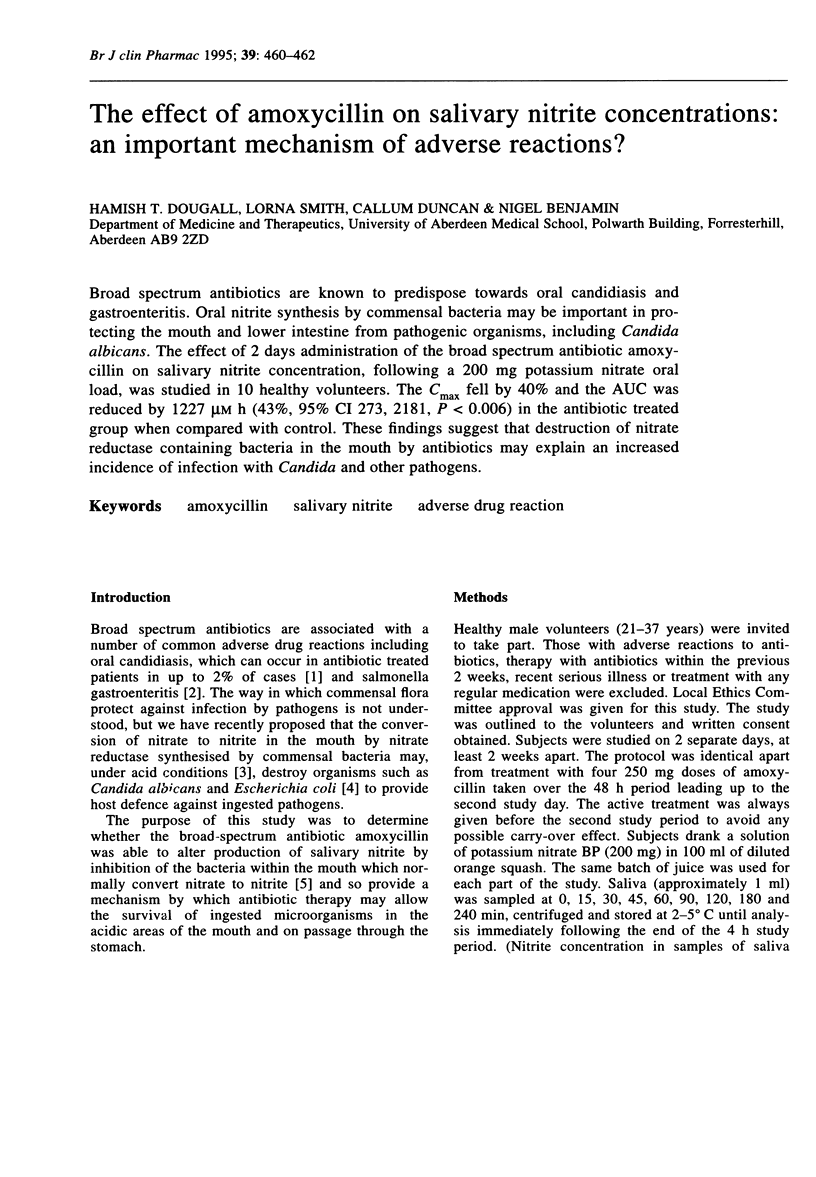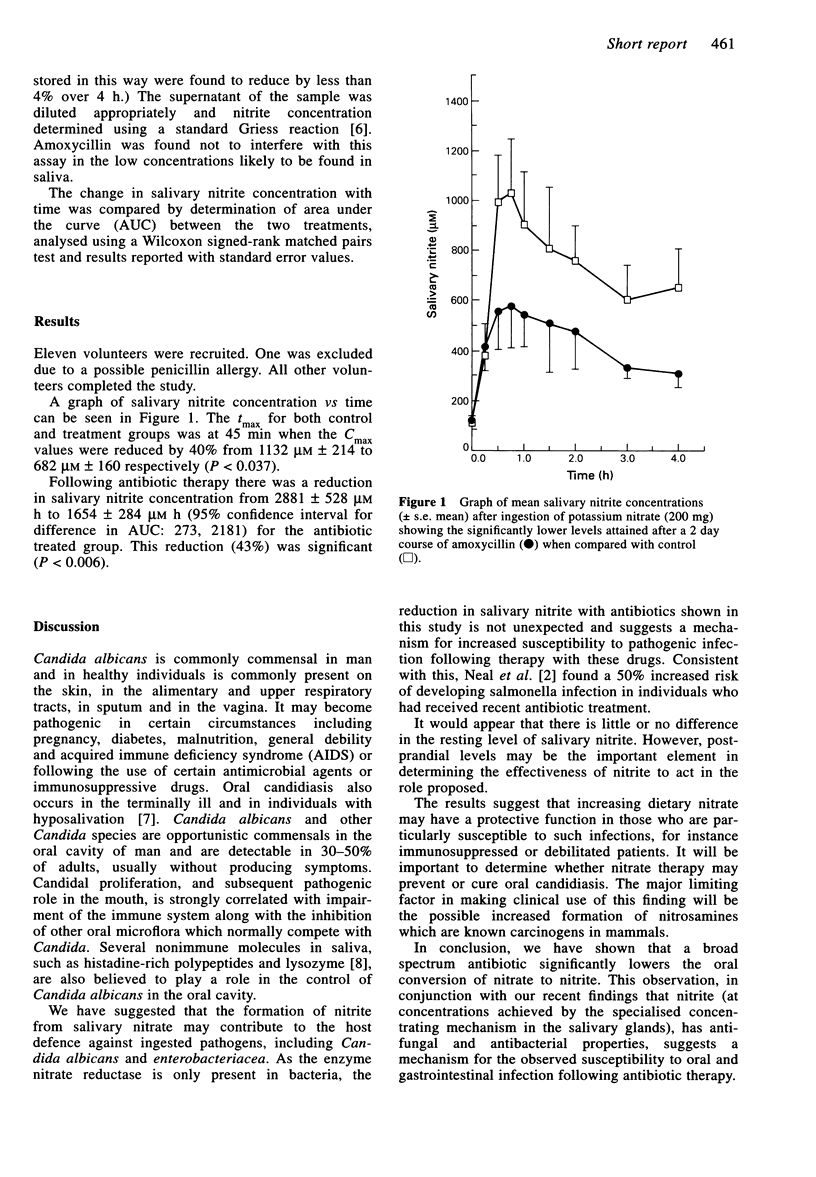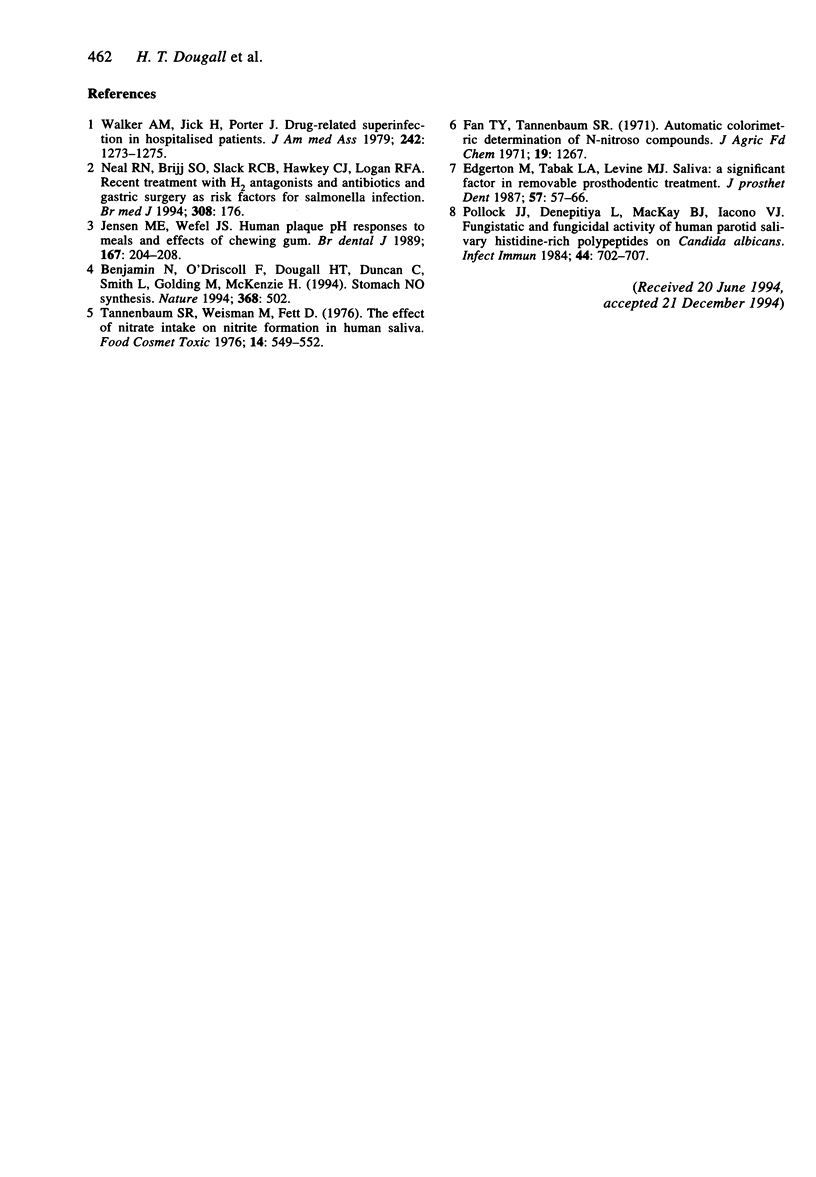Abstract
Broad spectrum antibiotics are known to predispose towards oral candidiasis and gastroenteritis. Oral nitrite synthesis by commensal bacteria may be important in protecting the mouth and lower intestine from pathogenic organisms, including Candida albicans. The effect of 2 days administration of the broad spectrum antibiotic amoxycillin on salivary nitrite concentration, following a 200 mg potassium nitrate oral load, was studied in 10 healthy volunteers. The Cmax fell by 40% and the AUC was reduced by 1227 microM h (43%, 95% CI 273, 2181, P < 0.006) in the antibiotic treated group when compared with control. These findings suggest that destruction of nitrate reductase containing bacteria in the mouth by antibiotics may explain an increased incidence of infection with Candida and other pathogens.
Full text
PDF


Selected References
These references are in PubMed. This may not be the complete list of references from this article.
- Benjamin N., O'Driscoll F., Dougall H., Duncan C., Smith L., Golden M., McKenzie H. Stomach NO synthesis. Nature. 1994 Apr 7;368(6471):502–502. doi: 10.1038/368502a0. [DOI] [PubMed] [Google Scholar]
- Edgerton M., Tabak L. A., Levine M. J. Saliva: a significant factor in removable prosthodontic treatment. J Prosthet Dent. 1987 Jan;57(1):57–66. doi: 10.1016/0022-3913(87)90117-x. [DOI] [PubMed] [Google Scholar]
- Jensen M. E., Wefel J. S. Human plaque pH responses to meals and the effects of chewing gum. Br Dent J. 1989 Sep 23;167(6):204–208. doi: 10.1038/sj.bdj.4806971. [DOI] [PubMed] [Google Scholar]
- Neal K. R., Briji S. O., Slack R. C., Hawkey C. J., Logan R. F. Recent treatment with H2 antagonists and antibiotics and gastric surgery as risk factors for Salmonella infection. BMJ. 1994 Jan 15;308(6922):176–176. doi: 10.1136/bmj.308.6922.176. [DOI] [PMC free article] [PubMed] [Google Scholar]
- Pollock J. J., Denepitiya L., MacKay B. J., Iacono V. J. Fungistatic and fungicidal activity of human parotid salivary histidine-rich polypeptides on Candida albicans. Infect Immun. 1984 Jun;44(3):702–707. doi: 10.1128/iai.44.3.702-707.1984. [DOI] [PMC free article] [PubMed] [Google Scholar]
- Tannenbaum S. R., Weisman M., Fett D. The effect of nitrate intake on nitrite formation in human saliva. Food Cosmet Toxicol. 1976 Dec;14(6):549–552. doi: 10.1016/s0015-6264(76)80006-5. [DOI] [PubMed] [Google Scholar]
- Walker A. M., Jick H., Porter J. Drug-related superinfection in hospitalized patients. JAMA. 1979 Sep 21;242(12):1273–1275. [PubMed] [Google Scholar]


